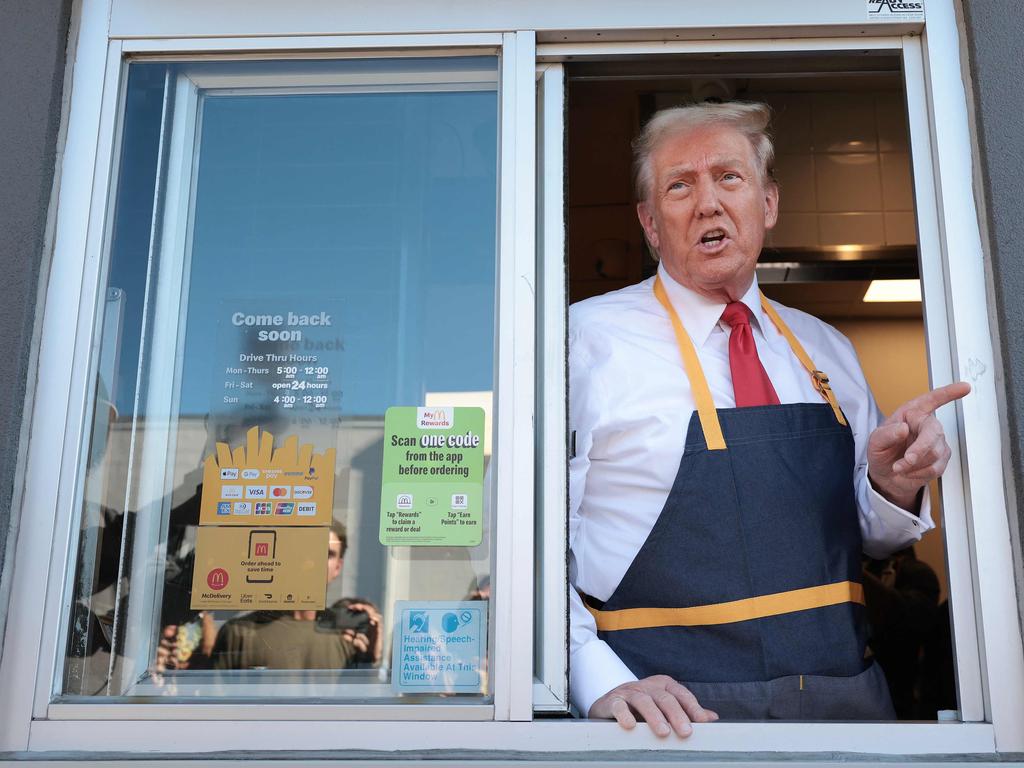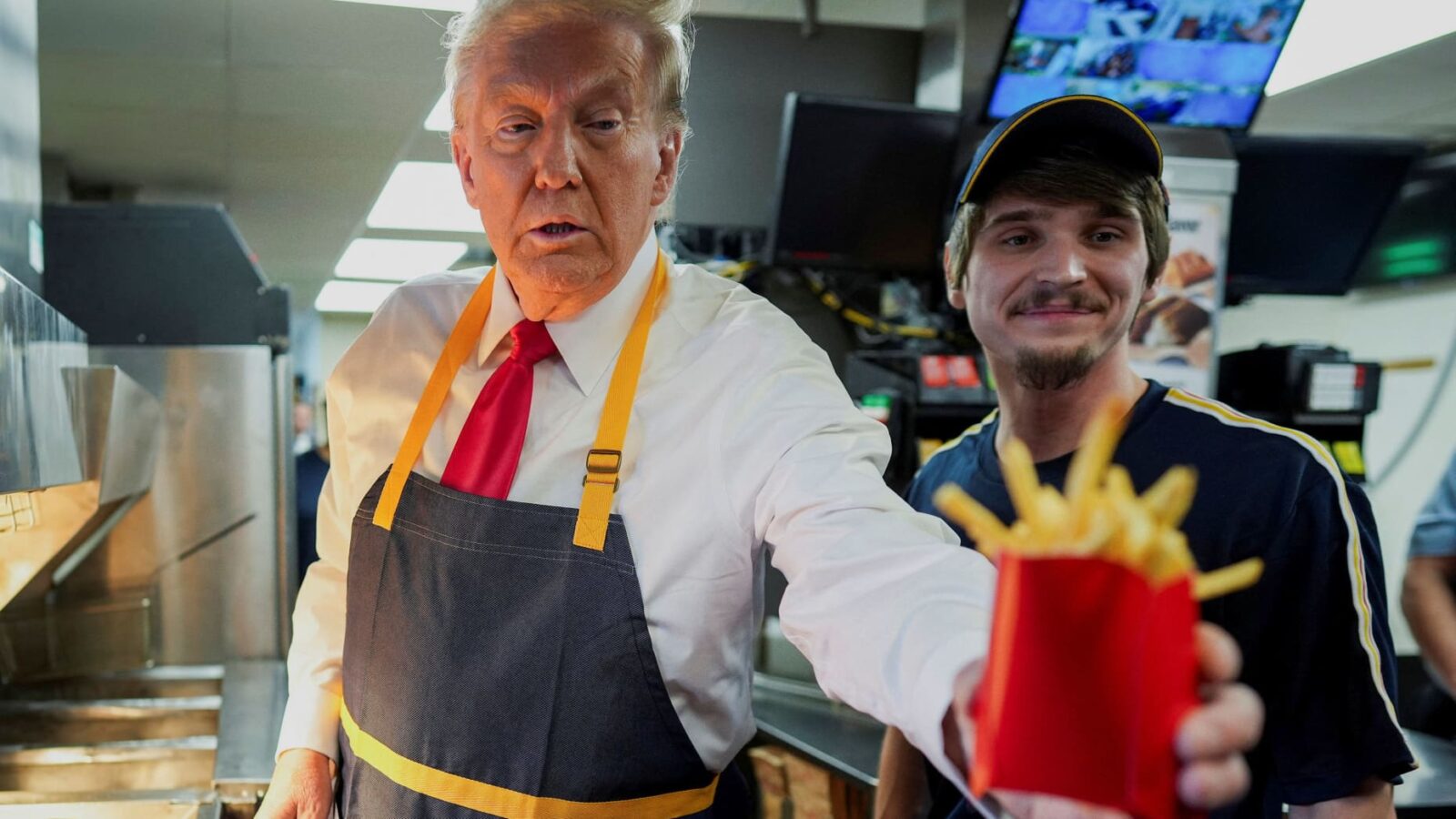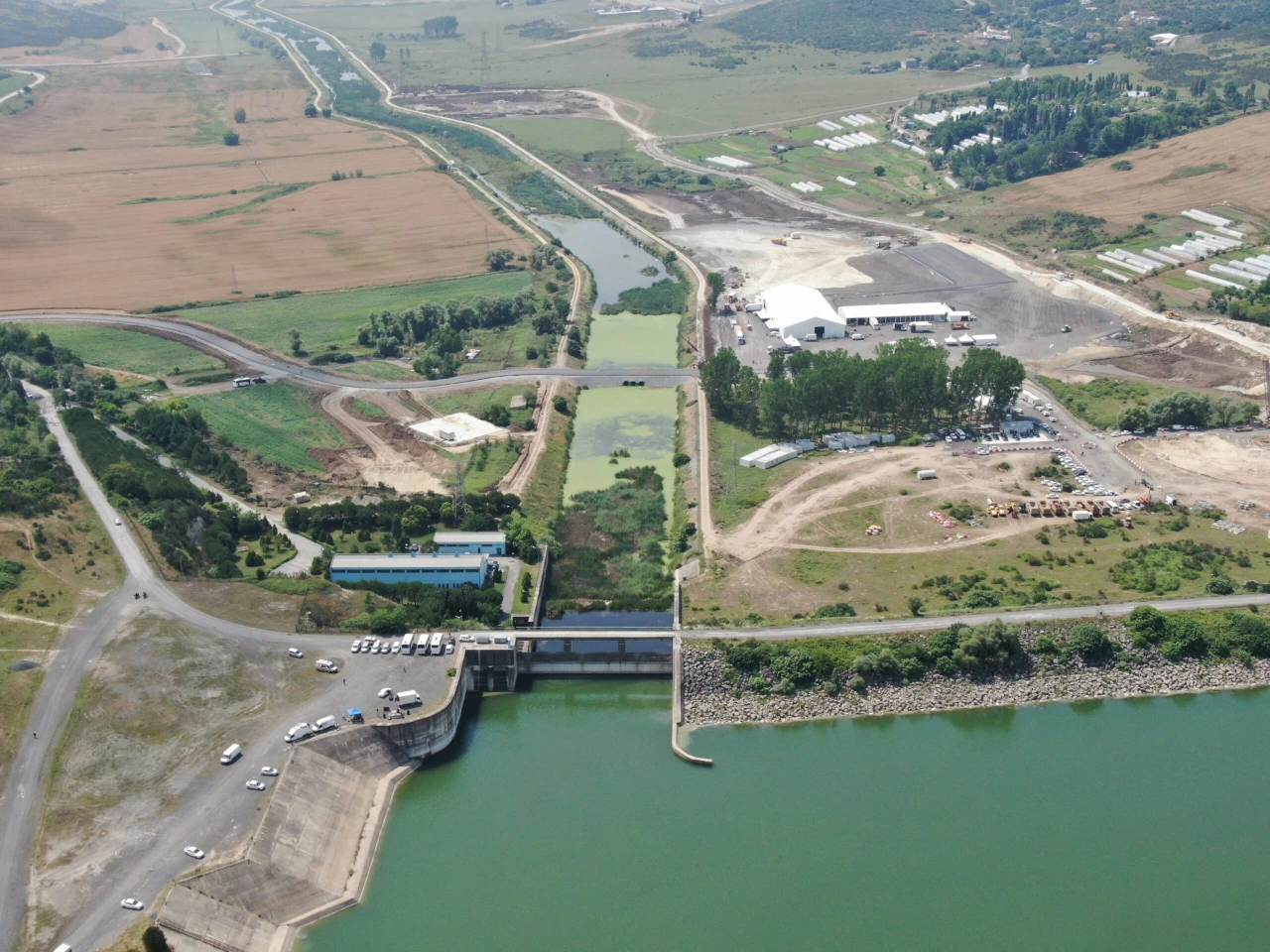From escalators to garbage trucks: How Trump’s stunts shape his campaign
 Republican presidential nominee, former President Donald Trump holds a press conference from inside trash hauler at Green Bay Austin Straubel International Airport on October 30, 2024. (AFP Photo)
Republican presidential nominee, former President Donald Trump holds a press conference from inside trash hauler at Green Bay Austin Straubel International Airport on October 30, 2024. (AFP Photo)
By driving a campaign-branded garbage truck at a recent stop in Wisconsin, former President Donald Trump has reignited discussions about his unconventional campaign strategies.

The October 30 event, billed as a response to recent remarks by President Joe Biden, featured Trump taking the wheel of a truck adorned with campaign messaging, a symbolic gesture his supporters say underscores his criticisms of the Biden administration.
A Trump-style approach to Biden’s remarks
The former U.S. president’s stunt was a deliberate jab at President Joe Biden, who asserted that Trump supporters are “garbage.”
By operating the garbage truck, he aimed to convey alignment with working Americans while casting his political opponents as out of touch with the realities many citizens face. This imagery mirrors a recurring theme in Trump’s political rhetoric, where he positions himself as a voice for what he describes as “forgotten” Americans.
Political strategy and media impact
This event exemplifies Trump’s long-standing media strategy: using eye-catching visuals and pointed gestures to dominate the public narrative. His critics argue that such tactics are mere theatrics, but Trump’s supporters view these stunts as an effective way of highlighting grievances with the current administration.
A history of bold campaign actions: Trump’s unconventional style from escalators to fry stations
Former President Donald Trump’s campaign tactics have long been characterized by grand gestures that both captivate and divide audiences. From his famous escalator descent in 2015 to his recent Wisconsin garbage truck stunt and fry station work in Pennsylvania, Trump has consistently used provocative symbols to convey political messages, challenging traditional campaigning.
The escalator ride: A campaign kickoff with symbolic undertones
Trump’s journey into political stardom began with a dramatic entrance: his June 16, 2015, descent on an escalator at Trump Tower. This theatrical moment launched his first presidential campaign and became a symbol that resonated with supporters and critics alike.
According to Trump, the ride represented his connection to ordinary Americans and the possibility of “social mobility,” which he framed as central to his platform.

By descending into the public sphere, he symbolized his willingness to “go down to the people” and take on the political elite, reinforcing his narrative as an outsider ready to restore the American Dream.
The spectacle of the escalator entrance also served as a dramatic introduction to Trump’s unorthodox style. He described it as akin to an “awards show,” creating an indelible image that captured media attention and set the tone for his unconventional campaign.
The event catapulted Trump into the spotlight, securing widespread coverage that established him as a political force to be reckoned with, while simultaneously marking a departure from traditional campaign norms.
Fry station and garbage truck: connecting with working-class voters and countering Kamala, Biden
Nearly a decade later, Trump continues to deploy memorable gestures in his campaign, aimed at connecting with working-class voters. His October 20, 2024, appearance at a Pennsylvania McDonald’s, where he worked the fry station, is the latest in a string of efforts to align himself with everyday Americans.
Donald Trump’s fry station stunt at McDonald’s was a direct response to Democratic nominee Kamala Harris’s claims about having worked at the fast-food chain while in college.

Trump has openly questioned the validity of Harris’s story, asserting—without evidence—that she never held that job and suggesting her narrative was misleading.

By taking a turn at the fry station, Trump aimed to challenge Harris’s credibility and resonate with working-class voters, declaring his enthusiasm for the job with remarks like, “I’ve wanted to do this my entire life.”
Like his escalator ride, this stunt was calculated to resonate with a base that sees him as more attuned to the working class than his elite status might suggest.
Similarly, Trump’s October 30 event in Wisconsin, where he drove a campaign-branded garbage truck, reflected his willingness to use dramatic imagery to convey criticism. This stunt was a pointed jab at President Joe Biden, who claimed Trump supporters are “garbage.”
The visual of Trump in a garbage truck not only highlighted his disdain for the current administration but also amplified his image as a candidate unafraid to get his hands dirty—a theme he has emphasized repeatedly.
A pattern of populist symbolism and driving media engagement
Trump’s campaign events are designed to provoke strong reactions and generate extensive media coverage, a tactic that has proven effective in capturing the public’s attention. His escalator ride, fry station work, and garbage truck drive all emphasize spectacle and relatability but also serve to dominate news cycles.
At McDonald’s, for instance, Trump fielded questions from reporters while flipping fries, turning a staged photo-op into a media event that extended his message far beyond Pennsylvania.
These actions continue to define Trump’s political persona, framing him as a populist despite criticisms. Opponents argue that while he portrays himself as an advocate for the working class, his policies often favor the wealthy.
For some, the escalator ride was less a symbol of social mobility than a reflection of elitism, with critics interpreting his descent as looking down on the very people he claimed to represent. Similarly, detractors view his McDonald’s fry station stunt as insincere, given his wealth and privileged background.
The authenticity of Trump’s political stunts in question
While Trump’s grand displays resonate with his base, they also invite criticism. Critics argue that these gestures lack authenticity, accusing Trump of staging connections with working-class Americans for political gain rather than genuine outreach. In particular, his mockery of Vice President Kamala Harris’s claim of having worked at McDonald’s during her university years was seen by some as trivializing the real struggles of low-wage workers.
His rhetoric during these events often emphasizes divisive themes, such as in his escalator announcement speech, which included inflammatory statements on immigration that critics view as exclusionary. The escalator, like his other stunts, has become a contested symbol: to some, it embodies aspirations and challenges; to others, it reflects divisiveness and spectacle over substance.
A consistent strategy of unconventional campaigning
Trump’s history of bold campaign actions—whether descending an escalator, operating a fry station, or driving a garbage truck—reflects a consistent strategy of challenging the traditional boundaries of political campaigning.
These stunts convey his anti-establishment stance and, whether viewed as genuine or theatrical, position him as a figure who disrupts political norms and garners significant media attention.
As Trump’s campaign continues, his ability to command media attention through unconventional methods underscores his enduring influence on American politics. These symbolic acts remain central to his appeal, captivating supporters and critics alike while shaping his image as a candidate unafraid to mix spectacle with political messaging.



